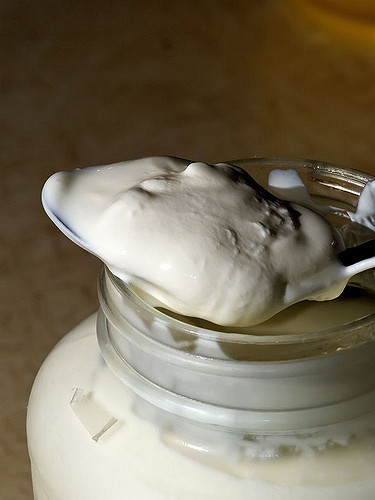What's wrong with the renamed fresh cream?
posted on
May 24, 2018

Fresh cream. Fresh raw cream. So silky. So decadent. Savory and sweet. In my opinion, one of the best foods around. When it’s truly fresh, it’s divine.
Cream, the fat of the milk, is rich in fat soluble vitamins as well as conjugated linoleic acid and even coenzyme Q10. If raw, fresh cream is packed with beneficial bacteria and enzymes with the vitamins intact.
If you know all this, then you also know that, when you receive substandard cream, it is heartbreaking.
What could be wrong with your cream?
- - It’s too sour! Sour cream happens naturally when its fresh and unprocessed. It is a live food that is constantly fermenting, even in the fridge. It will get slowly more sour over time. It should take 1-2 weeks to become really sour. At that point, you can use it like sour cream or incorporate it into cooking or baking.
- - It’s too bitter! Bitter cream is hard to diagnose, as it can be caused by many factors. Maybe the cows ate onion grass in the field. Perhaps the barn smell was absorbed. Perhaps bacteria were introduced that is causing the fermentation to go down a different path. Perhaps it was stored at too cold of a temperature. Regardless, please report bitter cream immediately. The farmer will do his best to diagnose and solve the problem ASAP!
- - It’s too thick! This one gets me. How could cream be too thick!? Two factors affect the thickness of cream: speed and temperature. The faster the cream separator spins, the thicker the cream. The warmer the milk, the thicker the cream. And vice versa. If your cream is too thick, there is an easy remedy. Add some milk to make it lighter.
Due to this last complaint, the farmer is renaming the cream to better match the expectations set by other cream producers. Same great products, different names.
Light Cream will now be called Heavy Cream.
The new Heavy Cream will be similar in thickness to store bought cream.
Heavy Cream will now be called Super Heavy Cream.
The new Super Heavy Cream is really thick. It cannot be found in stores. It is spoonable and barely pourable. If you haven’t tried it yet, I highly recommend it.
Cream can be used in so many culinary ways. You can top almost any dessert or fruit with whipped cream. Add it to a soup. Cook eggs in it. Add it to coffee or tea. Make panna cotta or ice cream.
Have any awesome recipes for cream? I’d love to hear them!
-----
Update 9/18/25: The farm only sells one kind of cream now -- regular raw heavy cream. It should be around the same consistency as store bought heavy cream (but without any weird thickeners). We do get a lot of requests to bring back the Super Heavy Cream. Keep those requests coming! If we get enough, maybe the farm will bring it back :)




